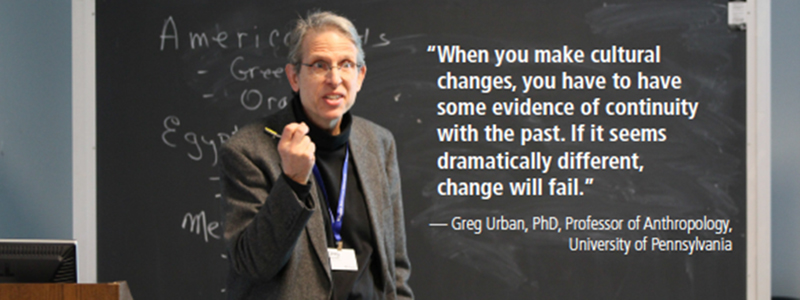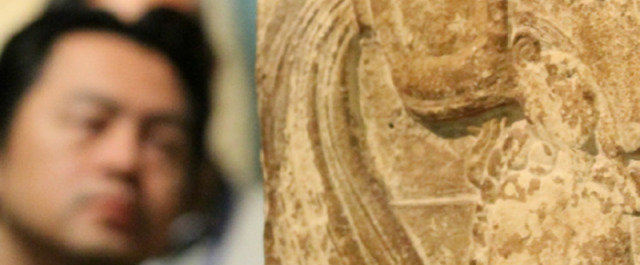Culture change is hard to do. Just look at Ron Johnson’s attempted transformation of JCPenney in 2012. Or go back a few thousand years to the pharaoh Akhenaten, who transformed Egypt’s religious system during his 17-year reign. He had statues and other symbols altered to reflect monotheism, destroying every reference to multiple deities, including public inscriptions. But the change did not survive. A few years after his death, polytheism was back, and all traces of the new religion were gone.
Participants in Wharton’s Executive Development Program hear Akhenaten’s story at the University of Pennsylvania’s Museum of Archaeology and Anthropology, where anthropology professor Greg Urban leads a session called The Power of Corporate Culture—and How to Harness It.
Urban explains, “Akhenaten’s story is a cautionary tale. When you make cultural changes, you have to have some evidence of continuity with the past. If it seems dramatically different, change will fail. One way to do that is to deploy symbols that help you produce the results you want. What we see with Akhenaten is a use of symbols that simply reinforced dramatic change. People weren’t ready for it.”
The museum session is one example of the Executive Development Program’s multidimensional approach, which provides in-depth knowledge of core business areas for leaders who are transitioning into a larger role in their organizations. Specifically, participants strengthen their ability to build and lead teams, make decisions, negotiate; and deepen business acumen in the areas of leadership, marketing, finance, strategy, and operations management.
Regarding culture change, perhaps one of the most difficult leadership undertakings, Urban notes that it is often the small things that make people most uncomfortable. “The things you think are going to have the greatest effect, probably the things you will spend the most time working through, may not bother anybody.
 A classic example comes from the Boeing-McDonnell Douglas merger. After management handed out pencils that read ‘Boeing McDonnell Douglas,’ the McDonnell employees could be heard sharpening those pencils until ‘Boeing’ disappeared. Symbols are important, and they can backfire if you’re not observant.”
A classic example comes from the Boeing-McDonnell Douglas merger. After management handed out pencils that read ‘Boeing McDonnell Douglas,’ the McDonnell employees could be heard sharpening those pencils until ‘Boeing’ disappeared. Symbols are important, and they can backfire if you’re not observant.”
Urban says that we typically think of ‘culture shock’ as something big, “but very small things can catch you off guard. They can become something much more important than you originally thought. We expect organizations to clash on important management issues, and there are many well-known illustrations of that. Japanese and American companies, for example, have deep disagreements about HR issues. Americans want the right to fire people, while Japanese want to find another position within the company for someone who is not doing a good job where they are.”
But, says Urban, more often clashes are about details that no one expected would become an issue. These issues can become even more important when leaders are working in a global context. Understanding that what is very important to one person may be irrelevant to someone else is key. Leaders who can suspend their own judgments and understand why something that might seem insignificant can provoke such strong feelings in another person are better able to help work through a change. Urban says this ability to think and act as an anthropologist, seeing from another’s point of view, can allow you to identify where the real problem lies and address it directly.
“Don’t expect everyone to go along with a change,” he cautions. “Pay attention to details, and be ready to spot resistance. Even a pharaoh couldn’t simply dictate change that lasts.”
The Executive Development Program runs March 15–27, 2015 and September 13–25, 2015 in Philadelphia, PA.
For more information, contact execed@wharton.upenn.edu or +1.215.898.1776 (worldwide).
Visit: www.WhartonEDP.com




































